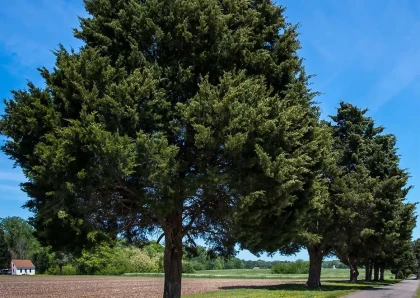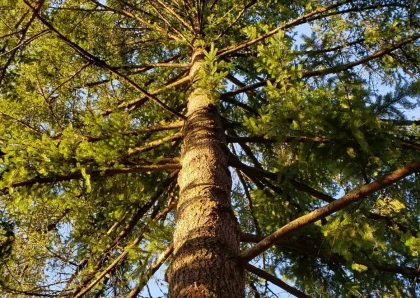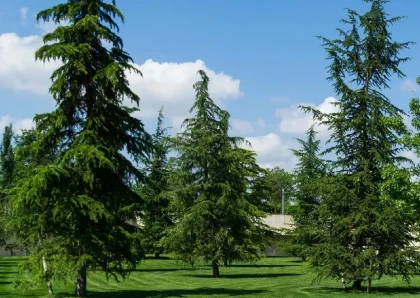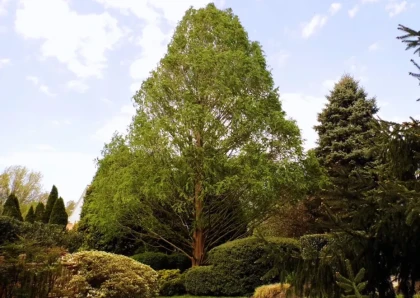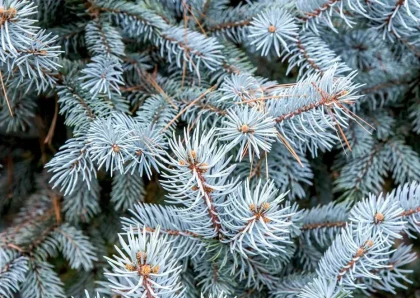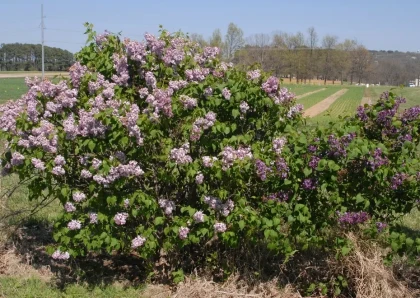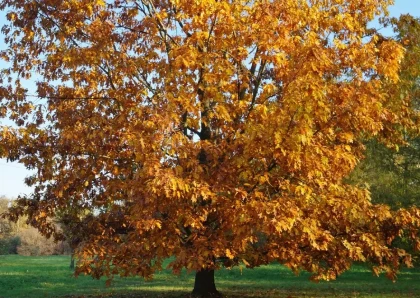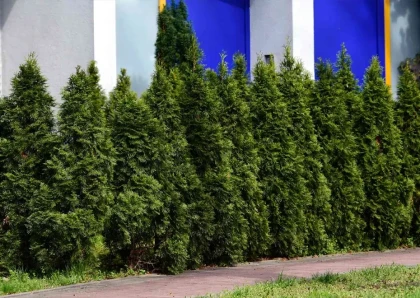
Chinese Chestnut Tree
Overview
Description
The Chinese Chestnut Tree (Castanea mollissima) is a species of chestnut tree native to China and other parts of East Asia. It is a deciduous tree belonging to the family Fagaceae, which also includes oaks and beeches. The Chinese Chestnut Tree is widely cultivated for its edible nuts and is considered one of the primary chestnut species used in agriculture.
Characteristics:
- Size: It typically reaches a height of 40 to 60 feet (12 to 18 meters) when fully mature, though some specimens can grow even taller.
- Leaves: The leaves are simple, alternate, and elliptical in shape with serrated edges. They are glossy green in color during the growing season and turn yellow to brown in the fall.
- Flowers: The tree produces long, catkin-like clusters of small, creamy white flowers in late spring to early summer. These flowers are a source of pollen for bees and other pollinators.
- Nuts: The nuts of the Chinese Chestnut Tree are the main attraction. They are large, sweet, and have a shiny brown shell. The nuts are typically enclosed in spiny burrs, which split open when ripe, releasing the edible nuts inside.
- Culinary Uses: Chinese chestnuts are popular for their culinary applications. They can be eaten roasted, boiled, or used in various dishes and desserts. They are a common ingredient in Chinese cuisine and are also used in other Asian and international recipes.
- Cultivation: Chinese Chestnut Trees are well-adapted to a range of soil types and are relatively easy to grow. They prefer full sun and adequate moisture but can tolerate some drought once established. They are commonly cultivated in orchards and home gardens.
Different Types of Chinese Chestnut Tree
1. Yao Chestnut (Castanea mollissima 'Yao')
This variety is known for its large and sweet-tasting nuts. It is one of the popular cultivars grown for its edible nuts.
2. Qing Chestnut (Castanea mollissima 'Qing')
The Qing chestnut tree is valued for its early ripening nuts, which are large and have a good flavor.
3. Nanking Chestnut (Castanea mollissima 'Nanking')
This variety is a dwarf form of Chinese chestnut tree, making it suitable for smaller spaces or container gardening. It also produces smaller, but still delicious, nuts.
4. Vanuxem Chestnut (Castanea mollissima 'Vanuxem')
Vanuxem is a cultivar that is prized for its disease resistance, particularly against chestnut blight, a fungal disease that can affect chestnut trees.
5. Kuling (Castanea mollissima 'Kuling')
Kuling is another cultivar known for its disease resistance and high-quality nuts.
6. Meiling (Castanea mollissima 'Meiling')
This variety is appreciated for its abundant nut production.
7. Peach Chestnut (Castanea mollissima 'Peach')
The Peach chestnut tree is named for its peach-shaped nuts, which are medium-sized and flavorful.
8. Alain (Castanea mollissima 'Alain')
Alain is a cultivar that is recognized for its cold hardiness, making it suitable for colder climates.
9. Snow (Castanea mollissima 'Snow')
This variety is known for its white or pale-colored nuts, which can be visually striking.
Wood Products from Chinese Chestnut Tree
Chinese Chestnut Tree (Castanea mollissima) wood is versatile and can be used to create various wood products. Here are some common wood products that can be made from Chinese Chestnut Tree lumber:
- Furniture: Chinese Chestnut wood is often used to make furniture, including tables, chairs, cabinets, and bed frames. It is valued for its attractive grain patterns and natural reddish-brown color.
- Flooring: Chinese Chestnut wood is suitable for flooring due to its hardness and durability. It can be used for solid wood flooring or engineered wood flooring.
- Doors: Chinese Chestnut wood is used to manufacture interior and exterior doors. Its stability and resistance to warping make it a good choice for this purpose.
- Cabinetry: The wood's fine texture and color make it a popular choice for kitchen and bathroom cabinets.
- Millwork: Chinese Chestnut wood can be used for decorative millwork such as baseboards, crown moldings, and window trim due to its workability and attractive appearance.
- Panels and Plywood: Chinese Chestnut wood can be used to create panels for walls and ceilings or used as a core material in plywood.
- Veneer: The wood can be sliced into thin sheets to create veneer that is used to cover furniture, cabinets, and other surfaces, providing an attractive finish.
- Musical Instruments: Chinese Chestnut wood is sometimes used in the construction of musical instruments, such as acoustic guitars and other stringed instruments.
- Wooden Utensils: The wood's natural resistance to decay and its fine texture make it suitable for crafting wooden utensils like cutting boards, spoons, and spatulas.
- Wood Crafts: Chinese Chestnut wood is often used in crafting small wooden items and artistic woodwork.
Benefits of Chinese Chestnut Tree
- Edible Nuts: One of the primary benefits of the Chinese Chestnut Tree is the production of edible nuts. The nuts are large, sweet, and nutritious, making them a valuable food source for humans and wildlife. They are commonly used in culinary applications, such as roasted chestnuts and chestnut-based dishes.
- Sustainable Food Source: Chinese Chestnut Trees can provide a sustainable food source because they are relatively easy to grow and can yield a significant amount of nuts per tree. They can be cultivated in orchards and agroforestry systems, supporting local food production and reducing dependence on imported nuts.
- Wildlife Habitat: Chinese Chestnut Trees offer habitat and food for various wildlife species. The nuts are consumed by birds, mammals, and other animals, contributing to the biodiversity of the ecosystem.
- Soil Erosion Control: The deep root system of Chinese Chestnut Trees helps stabilize soil, reducing erosion on slopes and hillsides. This makes them beneficial for land conservation and management.
- Carbon Sequestration: Like other trees, Chinese Chestnut Trees absorb carbon dioxide (CO2) from the atmosphere during photosynthesis and store it as carbon in their tissues. As a result, they contribute to mitigating the effects of climate change by acting as carbon sinks.
- Timber and Wood Products: Chinese Chestnut wood is valuable for making various wood products, as mentioned earlier. It is durable, attractive, and workable, making it suitable for furniture, flooring, millwork, and more.
- Ornamental Value: Chinese Chestnut Trees have attractive foliage and produce catkin-like flowers in the spring, enhancing the aesthetic appeal of landscapes and gardens.
- Disease Resistance: Some cultivars of the Chinese Chestnut Tree exhibit resistance to chestnut blight, a devastating fungal disease that affects chestnut trees. These resistant varieties can help in re-establishing chestnut populations in areas affected by the blight.
- Cultural and Historical Significance: Chinese Chestnut Trees have cultural and historical significance, especially in their native regions. They have been cultivated and cherished for centuries, contributing to local traditions and customs.
- Shade and Windbreak: The canopy of mature Chinese Chestnut Trees provides shade and shelter from the wind, making them valuable for creating comfortable outdoor spaces and windbreaks in agricultural settings.
Tips for Planting and Maintaining Chinese Chestnut Tree
Planting Tips
- Choose a Suitable Location: Select a sunny spot with well-draining soil for planting the Chinese Chestnut Tree. Avoid areas prone to waterlogging.
- Plant in Spring or Fall: Plant the tree in the spring or fall when the weather is mild. Avoid planting during extreme heat or frost.
- Prepare the Soil: Ensure the soil is loosened and amended with organic matter before planting to promote healthy root growth.
- Planting Depth: Dig a hole that is deep enough to accommodate the root ball, but avoid planting the tree too deeply. The top of the root ball should be level with the ground.
- Watering: Water the tree thoroughly after planting and continue to provide adequate water during the first year to help establish the root system.
- Mulch: Apply a layer of mulch around the base of the tree to retain moisture, suppress weeds, and protect the roots from temperature fluctuations.
- Pruning: Prune any damaged or dead branches before planting and shape the tree if necessary to promote a strong structure.
Maintenance Tips
- Watering: Chinese Chestnut Trees prefer regular watering, especially during dry spells. Provide deep, slow watering rather than frequent shallow watering.
- Fertilization: Fertilize the tree annually in the spring with a balanced fertilizer to support healthy growth and nut production.
- Weeding: Keep the area around the tree free from weeds to reduce competition for nutrients and water.
- Pest and Disease Control: Monitor the tree for any signs of pests or diseases. Address any issues promptly using appropriate methods, such as organic pest control.
- Pruning: Prune the tree during the dormant season to remove dead or crowded branches and maintain its shape.
- Harvesting Nuts: Harvest the nuts when they are mature and have fallen from the burrs. Handle the nuts carefully to avoid damaging them.
- Winter Protection: Provide winter protection for young trees in colder climates to prevent frost damage.
Cons of Planting Chinese Chestnut Tree
- Invasive Potential: In some regions outside of its native range, the Chinese Chestnut Tree can be considered invasive. If planted in areas where it is not native, it may spread rapidly and outcompete native plant species, leading to ecological imbalances.
- Chestnut Blight Susceptibility: While some cultivars of the Chinese Chestnut Tree exhibit resistance to chestnut blight, the species, in general, is susceptible to this devastating fungal disease. Chestnut blight can cause significant damage to the tree and limit nut production.
- Large Size: Chinese Chestnut Trees can grow to be quite large, reaching heights of 40 to 60 feet or even taller. In small gardens or urban areas with limited space, the size of the tree might be impractical.
- Nut Droppings: While the nuts are valuable for their edibility, they can also create a mess when they fall from the tree during the autumn season. The spiny burrs can be sharp and uncomfortable to walk on.
- Nut Allergies: For some individuals with nut allergies, the presence of the Chinese Chestnut Tree and its nuts could pose a risk.
- Maintenance: As with any tree, Chinese Chestnut Trees require ongoing maintenance, including pruning, watering, and pest control. Failing to adequately care for the tree can lead to issues like disease or reduced nut production.
- Slow Growth: Chinese Chestnut Trees are not fast-growing trees. It may take several years before they start producing a significant amount of nuts.
- Not Suitable for All Climates: Chinese Chestnut Trees have specific climate preferences. They thrive in temperate regions and might not be well-suited to extremely cold or hot climates.
- Limited Culinary Interest: While the nuts are appreciated in some cuisines, they may not be as widely used or sought after in certain cultures, limiting their culinary interest.
Conclusion
In conclusion, the Chinese Chestnut Tree (Castanea mollissima) is a valuable and versatile tree that offers numerous benefits. It is known for its large and sweet-tasting edible nuts, which provide a sustainable food source for both humans and wildlife. The tree's deep root system aids in soil erosion control and contributes to carbon sequestration, making it beneficial for the environment.
Chinese Chestnut Trees can be used to produce various wood products, such as furniture, flooring, and cabinetry, due to their durable and attractive wood. Additionally, they add ornamental value to landscapes with their appealing foliage and catkin-like flowers.
However, there are some cons to consider, including potential invasiveness in non-native regions, susceptibility to chestnut blight, and their large size, which may not be suitable for all landscapes. Maintenance, including proper pruning and care, is essential for ensuring the tree's health and productivity.
Ultimately, when planting a Chinese Chestnut Tree, it's crucial to assess its suitability for the specific location, consider potential benefits and drawbacks, and take proper measures to care for the tree. With thoughtful planning and management, the Chinese Chestnut Tree can be a valuable addition to landscapes, providing both food and aesthetic value.
FAQs for Chinese Chestnut Tree
1. What is the Chinese Chestnut Tree?
The Chinese Chestnut Tree (Castanea mollissima) is a deciduous tree native to China. It is known for its large and sweet-tasting edible nuts and attractive foliage.
2. How tall does the Chinese Chestnut Tree grow?
The Chinese Chestnut Tree can grow to be around 40 to 60 feet tall or even taller, depending on the growing conditions and the specific cultivar.
3. When does the Chinese Chestnut Tree produce nuts?
Chinese Chestnut Trees typically start producing nuts when they reach around 3 to 5 years of age. The nuts ripen and fall from the tree during the autumn season.
4. Are the nuts of the Chinese Chestnut Tree edible?
Yes, the nuts of the Chinese Chestnut Tree are edible and have a sweet flavor. They are commonly roasted, boiled, or used in various culinary dishes.
5. Is the Chinese Chestnut Tree suitable for my climate?
Chinese Chestnut Trees thrive in temperate climates with well-defined seasons. They prefer areas with mild winters and moderate summers. It's essential to consider the specific climate of your region before planting.
6. Can I plant the Chinese Chestnut Tree in a small garden?
Chinese Chestnut Trees can grow to be quite large, so it's important to consider the available space in your garden. In small gardens, it's recommended to choose a dwarf or compact cultivar to ensure a manageable size.
7. How do I care for a Chinese Chestnut Tree?
To care for a Chinese Chestnut Tree, provide it with regular watering, especially during dry spells. Fertilize the tree annually in the spring with a balanced fertilizer. Prune the tree during the dormant season to remove dead or crowded branches. Monitor for pests and diseases and address any issues promptly.
8. Are Chinese Chestnut Trees susceptible to any diseases?
Yes, Chinese Chestnut Trees are susceptible to chestnut blight, a devastating fungal disease that can cause significant damage to the tree and limit nut production. Some cultivars may exhibit resistance to the disease.
9. Can I use Chinese Chestnut wood for furniture?
Yes, Chinese Chestnut wood is used to make furniture and various wood products. It is valued for its durability and attractive grain patterns.
10. Are Chinese Chestnut Trees invasive?
In some regions outside of its native range, the Chinese Chestnut Tree can be considered invasive. Before planting, check with local authorities to ensure it is suitable for your area.




